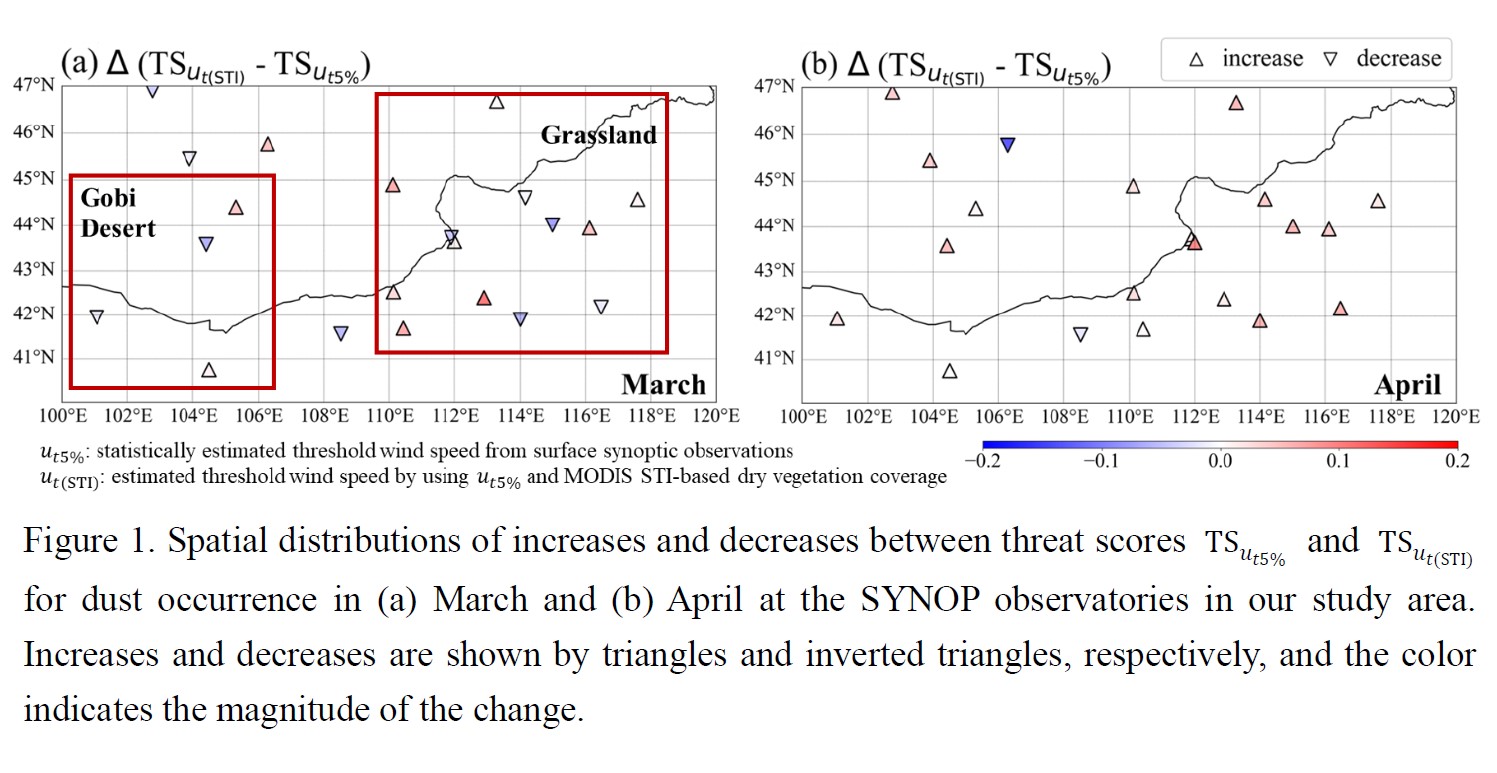JMSJ Highlights
Editor's Highlight : Wu et al. (2023)
Wu, J., Y. Kurosaki, T. T. Sekiyama and T. Maki, 2023: Effects of dry vegetation coverage estimated from the MODIS Soil Tillage Index on dust occurrence: Verification by surface synoptic observations. J. Meteor. Soc. Japan, 101,
https://doi.org/10.2151/jmsj.2023-004.
Early Online Release
Graphical Abstract
Editor in charge: Dr. Shiori Sugimoto
-
I highlight this paper which proposed a new method calculating the threshold wind speed for dust occurrence.
- A new method to obtain threshold wind speed that takes account of the interannual variations of dry vegetation cover is proposed.
- Dry vegetation coverage is a key factor determining interannual variations in the April dust occurrence.
- Other land surface factors such as soil freeze-thaw and snow cover should be considered to explain dust occurrence variations in March.

Abstract
In drylands, the dry vegetation coverage affects the threshold wind speed and dust occurrence. However, there has been little research into quantifying the effect of dry vegetation coverage on dust occurrence. This study investigated spatial and temporal variations of dust occurrence and three definitions of strong wind frequency over the Gobi Desert and surrounding regions in March and April, months when dust occurrence is frequent, during 2001–2021. We evaluated the effects of variations in dry vegetation on dust occurrence by using the threat scores of forecasted dust occurrences for each strong wind definition. Our results indicate that dry vegetation, which was derived from the MODIS Soil Tillage Index, affects dust occurrence more remarkably in April than in March. In March, land surface parameters such as soil freeze-thaw and snow cover in addition to dry vegetation coverage should be considered to explain dust variations in that month. However, use of the threshold wind speed estimated from dry vegetation coverage improved the prediction accuracy of dust occurrence in April. Therefore, we propose that the dry vegetation coverage is a key factor controlling dust occurrence variations in April. The findings imply that estimation of dry vegetation coverage should be applied to dust models.






